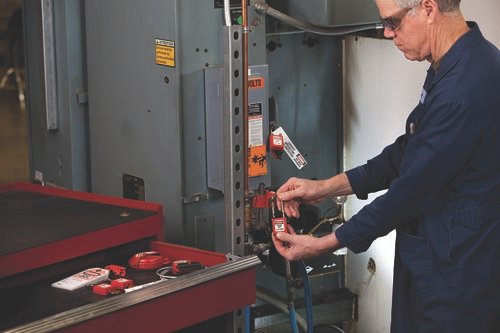When is it appropriate to use the alternative protection measures outlined in OSHA 29 CFR 1910.147 in place of standard LOTO procedures?

OSHA 29 CFR 1910.147 outlines “Alternative Protection Measure” procedures that can result in increased efficiency without compromising the safety of the operation. This exception also is referred to as the “minor servicing exception.” Designed for machine tasks that demand frequent repetitive access (e.g., clearing a jam on a conveyor or a minor tool change), alternative measures don’t require power sources to be completely cut off.
Examples of alternative methods technology include key-controlled locks, control switches, interlocked guards, and remote devices and disconnects. It also can mean locking out only a section of a piece of equipment rather than the entire machine.
The newest ANSI standard, “ANSI/ASSE Z244.1 (2016) The Control of Hazardous Energy – Lockout, Tagout and Alternative Methods,” is in agreement with OSHA that workers should be protected from injury from unexpected equipment startup or the release of potentially hazardous energy. However, the ANSI committee didn’t try to align fully with every historic OSHA compliance requirement. Instead, the new standard gives expanded guidance beyond OSHA’s regulatory limitation to tasks that are “routine, repetitive and integral to production operations.”
ANSI makes it clear that LOTO should be used unless the user can demonstrate that a well-established alternative method will provide effective protection. In situations in which the task is not well understood or risk-assessed, lockout should be the default protective measure applied to control machinery or processes.
Section 8.2.1 of ANSI/ASSE Z244.1 (2016) specifies that alternative methods should be used only after hazards have been assessed and documented through the application of a practicability (or justification) study to determine the techniques used will result in a negligible risk or no risk for sudden startup.
Following the Hierarchy of Controls model, ANSI/ASSE Z244.1 (2016) provides detailed guidance on if, when and how a range of alternative control methods can be applied to result in equal or improved protection for people performing specific tasks. In addition, alternative risk-reduction methodology is covered in detail specific to a number of new technologies, including the packaging, pharmaceutical, plastics, printing and steel industries; semiconductor and robotic applications; and others challenged by the current regulatory limitations.
At this point, it would be appropriate to underscore that LOTO provides the greatest level of protection, and, whenever possible, it should be used to protect employees from hazardous energy. In other words, inconvenience alone isn’t an acceptable excuse to use alternative measures.
In addition, CFR 1910.147 clearly states that an allowable alternative measure must provide the same or greater level of protection as LOTO. Otherwise, it’s considered noncompliant and therefore insufficient to replace LOTO.
By using standard safety-rated devices – such as interlock gates and e-stop buttons – a plant manager can achieve safe, reliable machine access that replaces standard LOTO procedures without violating OSHA requirements. Implementing alternative procedures to ensure equivalent protection for specific tasks can enhance productivity without endangering employees. However, those procedures – and their benefits – come with strings attached, requiring a thorough understanding of the latest OSHA and ANSI standards.



